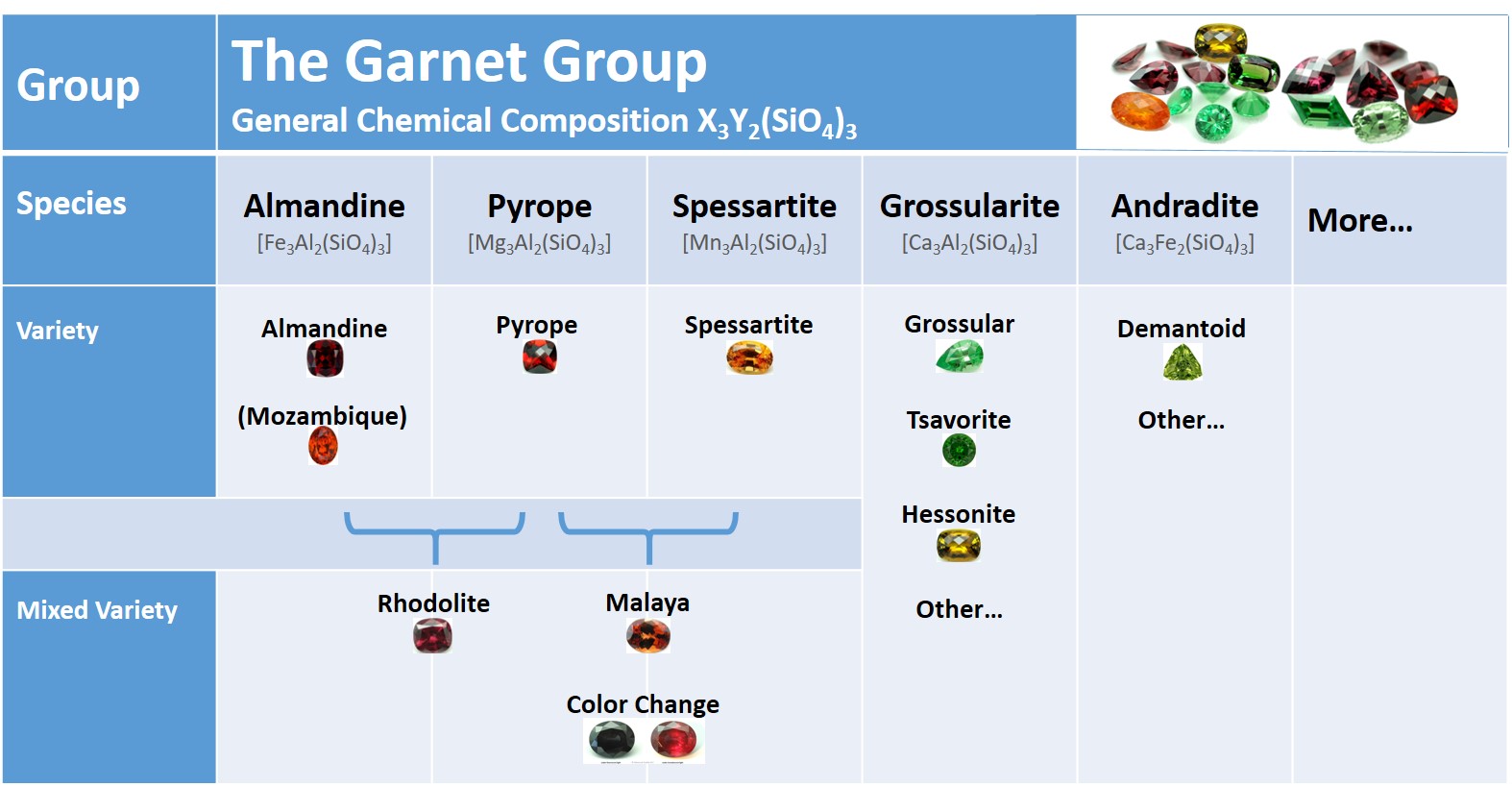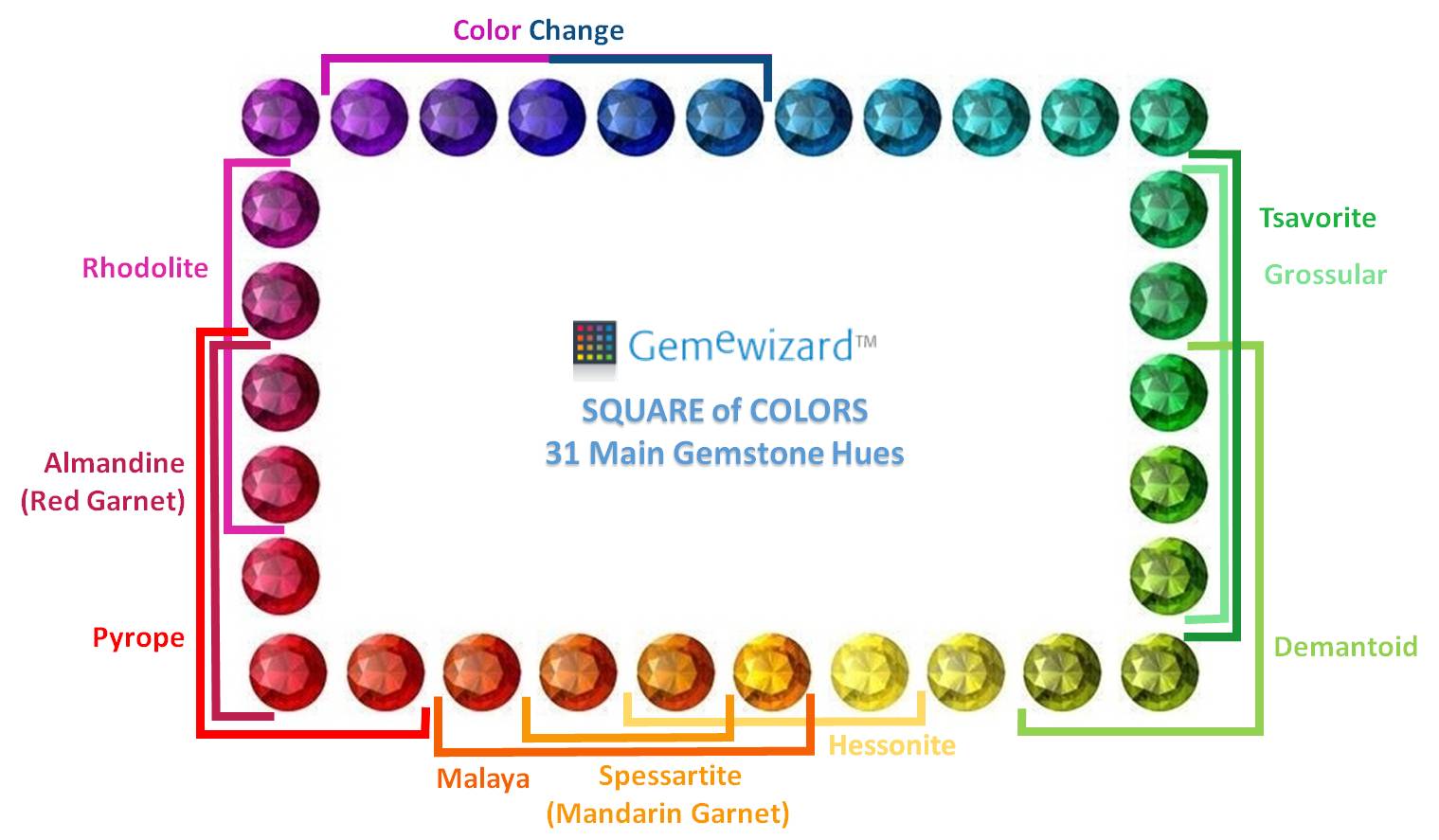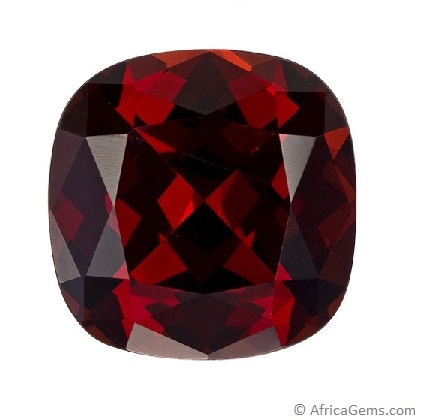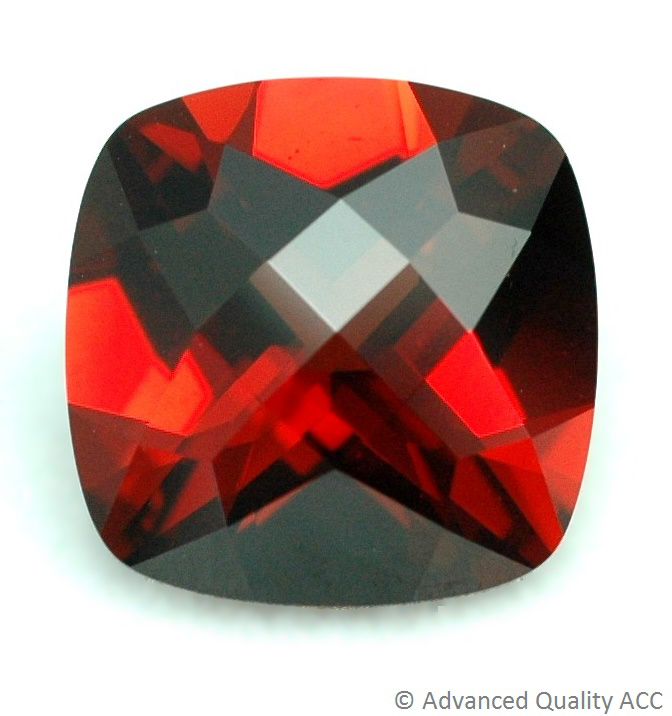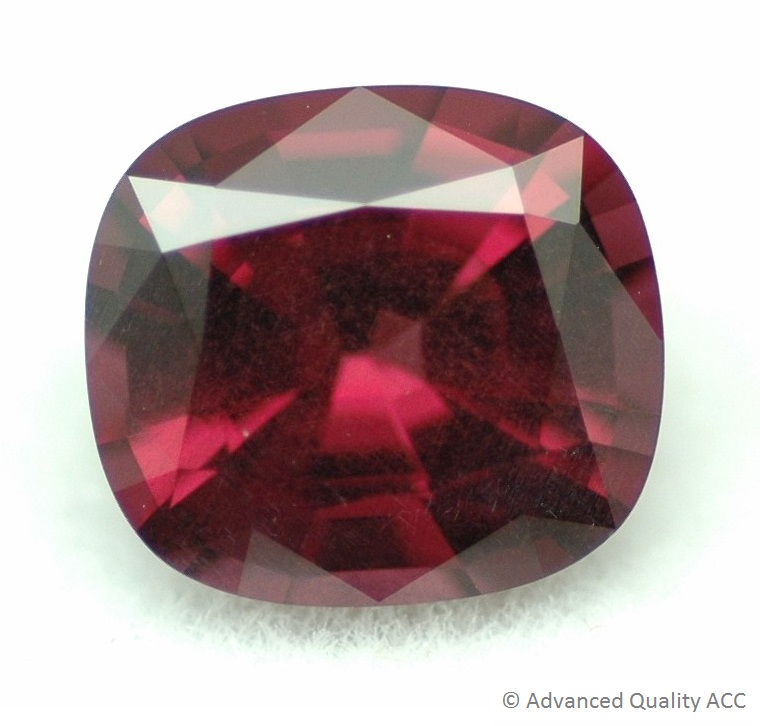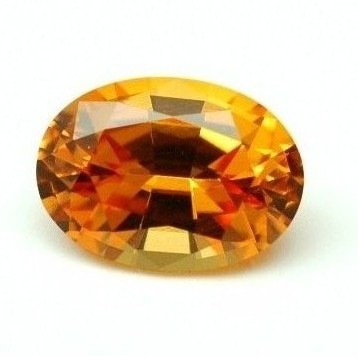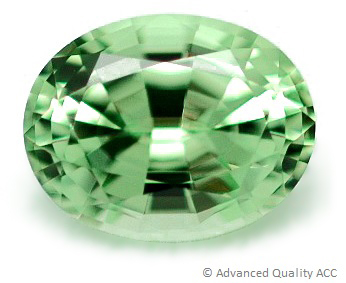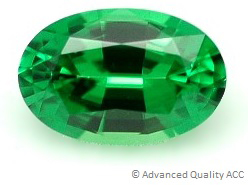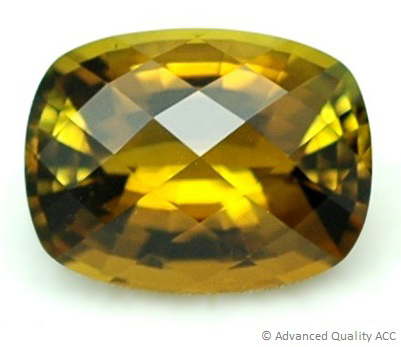GARNET
Garnets are nesosilicate minerals. They are an isomorphous series, that is their crystal structure is basically the same X3Y2(SiO4)3), but they differ in their chemical compositions. There are over 20 different garnet species, but only 6 of them are considered to be gem-worthy, some of which include a few varieties. These species are:
- Almandine;
- Pyrope;
- Spessartite;
- Grossularite;
- Andradite; and
- Uvarovite.
Garnets that are a mixture of 2 or more species are quite common as well.
LEGEND AND LORE
Red garnets were very common since ancient times and were mined in Europe of old, hence its name is thought to have come either from the Latin word granatum, meaning pomegranate, a token of the dark red color and shape of the seeds, or from the Middle English word gernet, meaning dark red.
Garnets in every variety are birthstones of the month of January. It is traditionally given on the 2nd and 6th wedding anniversaries.
Garnets have been around since ancient times. The Bible mentions garnets as one of the twelve gemstones in the breastplate of the high priest. Christians believed garnet symbolized the sacrifice of Christ. Muslims believed it illuminated the fourth heaven. The Greeks said it guarded children from drowning. Tribes from India used red garnets as pellets, believing that they would seek blood and inflict a deadlier wound upon enemies.
Garnet is believed to be capable of energizing the body, regenerating and revitalizing it. It is thought to stop bleeding and cure inflammatory diseases. Garnets have also been carried by travelers during travel for protection and are believed to protect against nightmares and bad dreams.
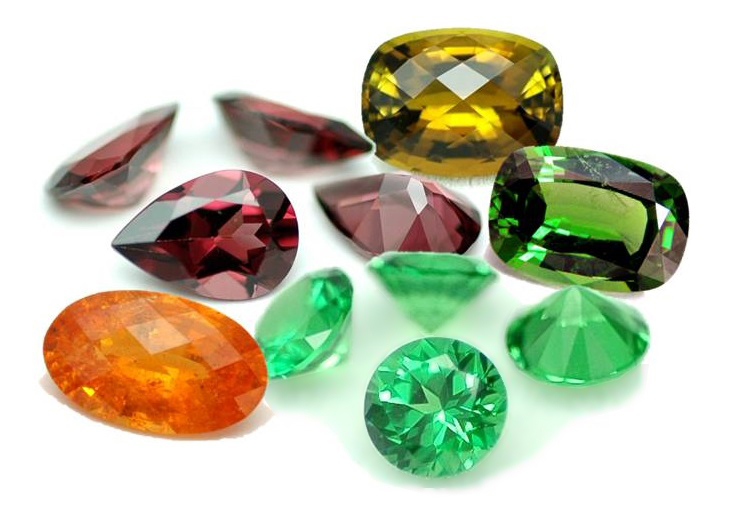
GARNET COLORS
Garnets are an extremely important group of gemstones, which appear in almost all the colors of the rainbow, from red to purple, from yellowish orange to brown, from light to dark green, and even in greenish blue (color change garnet). This group of gemstones comprises well known varieties, such as:
- Almandine, which displays deep red colors;
- Pyrope of pure red colors (lighter than Almandine);
- Rhodolite with purplish colors
- Spessartite from golden yellowish orange to orange
- Malaya from orangey Red to orangey Yellow
- Color Change garnets which usually change from bluish to purplish colors
- Grossular in light green shades
- Tsavorite in emerald‑green
- Hessonite from yellowish Orange to Yellow hues
- Demantoid ranging from deep green to yellowish green
Separate color grading rulers (or sets of rulers) and pricelists exist per each of the garnet varieties.
GARNET VARIETIES
ALMANDINE 
Almandine (or almandite), also known in the trade name red garnet, is the most prevalent of the garnets. Its color runs from strongly reddish Purple (28) to Red (1) to deep Red-Orange (3), and even to brownish Red. The common colors are medium to dark highly saturated Red to orangey Red. Sometimes the color is almost black.
Almandine garnets from Mozambique display more orangey colors than the typical color from other sources. Its color ranges from slightly purplish Red (29) to Orange (5). Its common colors are medium orangey Red.
PYROPE 
The pyrope's red color is lighter and more pleasant than the almandine’s. Pyrope garnet colors range from strongly purplish Red (30) to Red (1) to orangey Red (2) with high saturation and dark tone. The common colors are dark slightly purplish Red, but it can take on a darker blood‑red or a somewhat yellowish color, or even an almost dark purple.
Pyropes and almandines are almost never found in their pure form. The gemstones one encounters are actually compounds of almandine and pyrope ranging on a scale between pure almandine and pure pyrope.
RHODOLITE 
Rhodolite is a variety of mixed pyrope and almandine with colors ranging from reddish Purple (28) to slightly purplish Red (31), tending toward the purplish Red and pinkish Red colors. The common colors are dark deep reddish Purple to Red Purple.
The gemstone is generally far clearer than its red sisters and has properties common to both, but is considered superior to them. It is found in regions where pyrope and almandine are mined.
SPESSARTITE 
The spessartite garnet (or spessartine), also known by the trade names mandarin garnet and hollandine garnet, has an Orange-Yellow to reddish Brown color and is of very high luster. The spessartite colors range from Orange (5) to yellowish Orange (6), where larger stones are slightly darker and possess a brownish tint.
Most of the spessartite gems are heavily included causing them to sparkle as light reflects from these inclusions. This, in combination with its hardness, makes it an attractive stone.
Some traders limit the use of the trade name mandarin garnet to straight- or reddish-Orange colored gems only, calling gemstones with other tints by their generic spessartite name.
MALAYA 
Malaya garnet (sometimes spelled as malaia) is a mixture of pyrope and spessartite garnets. The Malaya garnet’s hues range from reddish Orange (4) to yellowish orange (6), resulting in a light to dark Orange to reddish Orange color.
Malaya, in Swahili means worthless or outcast. These garnets, found in Eastern and Central Africa, were once discarded in favor of the richer colored pyrope and rhodolite garnets. Today they are highly valued, but the Swahili name has stuck.
COLOR CHANGE 
Color change garnets are typically a result of the pyrope-spessartite mix, although many may also contain traces of grossularite or almandine.
The stones usually display a distinct color change between various intensities of very slightly bluish Green (15) to very strongly greenish Blue (19) under fluorescent light and Purple-Red (29) to strongly purplish Red (30) under incandescent light.
GROSSULAR 
The grossular (or grossularite) is a variety of the grossularite garnet species, which occurs in different forms as a light to dark green transparent gem; as a massive, opaque or translucent material; or as a marble‑like rock.
Grossular garnet gems, also known as green or mint-green garnets, produces colors ranging from yellowish Green (12) to bluish Green (16) with very slightly to slightly saturated levels.
For years, the grossular garnet gem prices were relatively low compared to its richer color variety tsavorite garnet. However, in recent years, the demand for its light pleasant green color has risen and today it sells for almost the same prices as the tsavorite.
TSAVORITE 
Tsavorite is actually a grossular with a more saturated color, colored by chrome or vanadium. Tsavorite has a high luster and an attractive emerald Green color, as well as a clear yellowish Green color in the lower qualities.
Tsavorite was discovered in 1967 in the Tsavo National Park near the border between Tanzania and Kenya, from which it received its name.
As in grossular, tsavorite garnet colors range from yellowish Green (12) to bluish Green (16), where the common colors are moderately to highly saturated Green or yellowish Green.
The tsavorite garnet is considered a good affordable replacement for the emerald. Comparing it to the expensive gemstone, the tsavorite commonly shows better clarity grade, higher luster and lower price.
HESSONITE 
The hessonite garnet, a variety of glossularite, possesses colors that range from reddish Orange (4) to orangey Yellow (7). The common colors are orangey Yellow with moderate to high saturation and light to dark tone, resulting in brownish Yellow to golden Brown, brownish Orange or even reddish Brown colors.
Hessonite is not considered a particularly important gemstone and is quite inexpensive.
DEMANTOID 
The demantoid is a variety of andradite and is considered the most precious garnet gem. Gemstones with fine colors are very rare. The common colors are moderately saturated yellowish Green and range from Green-Yellow (10) to Green (14). The greener gemstones can be more saturated than the yellower ones.
STAR GARNET 
The asterism effect of garnet is in the form of a 4-ray star, commonly of a dull shine, with angles of 70°/110° between the rays. Garnets with asterism ('star effect') are found mainly in ones that are semi translucent to opaque in transparency. As this effect is unattractive compared to the one in other gems such as corundum, star garnets are usually sold for lower prices.
GARNET SOURCES
Garnets are abundant and can be found all over the world, with sources often having several varieties. Let's take a look at the more important ones, starting with the African sources.
Africa
Tanzania – Tanzania is an important source of many garnet varieties. It is considered among the most important deposits of Rhodolite, and is one of the 3 unique sources of tsavorite, where it was first discovered. Other varieties include pyrope, grossular, hessonite, spessartite, Malaya (from the Umba River valley and Tunduru) and color change garnets.
Kenya – Kenya is another source of tsavorite, with deposits from the same geological structure extending from Tanzania. Other varieties include pyrope, rhodolite, grossular, spessartite and Malaya garnets.
Madagascar – Madagascar is the newest source of tsavorite discovered in the Toliara Province in 1991. Madagascar is also known for other varieties such as almandine, pyrope, rhodolite, hessonite, spessartite, malaya, and color change garnets.
Additional notable African sources include Mozambique, known for its orangey color almandines, as well as pyropes and rhodolites; Zambia, which serves as an important source of good quality raw almandine garnets; South Africa, where pyropes of the highest quality are found in the diamond pipes, especially in the Kimberley and De Beers mines, as well as rhodolites; Namibia, which sources the best specimens of Mandarin spessartite of a bright orange color; Zimbabwe, for its rhodolite; and Zaire, for Demantoid.
Asia Pacific
There are an abundance of sources in Asia for various garnet varieties.
Sri Lanka – Sri Lanka is among the most important and well known sources of rhodolite and hessonite. Other varieties include Almandine, which is mined in the vicinity of corundum deposits, pyrope, spessartite, malaya, and color change garnets.
India – Almandine is mined in large quantities in various parts of India. Additional varieties include pyrope, hessonite, and star garnets.
Myanmar – Myanmar also produces large quantities of Almandine from various areas, as well as pyrope, rhodolite, hessonite and spessartite.
China – China is yet another source for almandine, pyrope, rhodolite, spessartite and demantoid.
Other notable Asian sources include Thailand, for Almandine and rhodolite; and Korea for Demantoid.
Another notable source is Australia, for its almandine and pyrope.
The Americas
Garnets are also found in North and South America.
USA - Almandine of varying quality is found in many states in the US and rhodolite is known to come from several locations in North Carolina. The US also produces pyrope, grossular, hessonite, spessartite, color change, star and uvarovite garnets.
Other notable sources include Canada, which produces almandines, grossular, hessonite and uvarovite garnets; and Brazil with their almandine, pyrope, rhodolite, hessonite, spessartite and demantoid deposits.
Europe
Europe used to be the center of garnet production, mainly of almandines, but many of the mines have depleted, though some still remain.
Austria – Austria still produces high quality almandines.
Czech Republic – The Czech Republic is still a source for almandine and pyrope. Until the discovery of the South African pipes, the pyropes from the Czech Republic were considered the finest, and mining and cutting industries sprung up around them.
Russia – The Ural Mountains of Russia is considered the traditional source of demantoid, renowned for the high-quality stones they produce. Russia is also known for pyropes, mined in Transbaikalia, grossular and uvarovite.
PHYSICAL PROPERTIES
Variety: Species/Series:Garnet
Chemical Composition:Nesosilicate (with general formula X3Y2(SiO4)3)
Crystal System:Isometric (Cubic)
Color:All colors, with blue very rare
Hardness:6.5 to 7.5
Refractive Index:1.72 to 1.94
Specific Gravity:3.1 to 4.3


